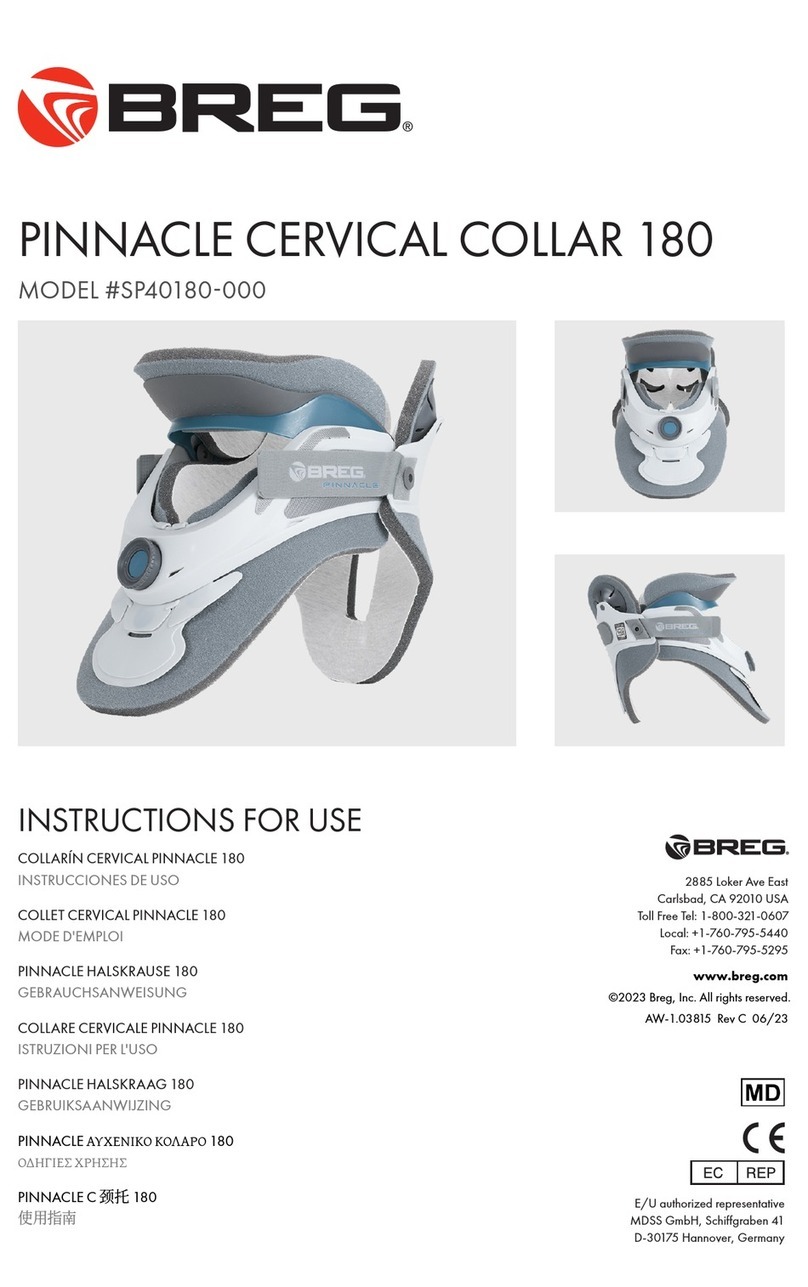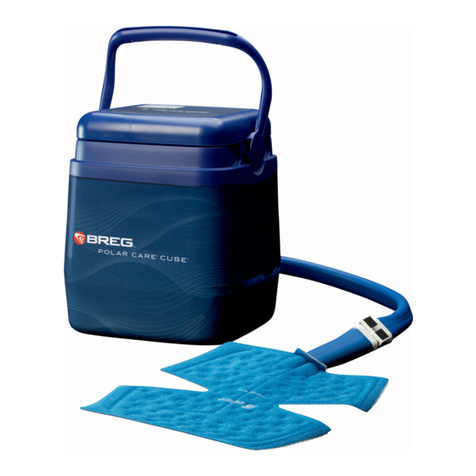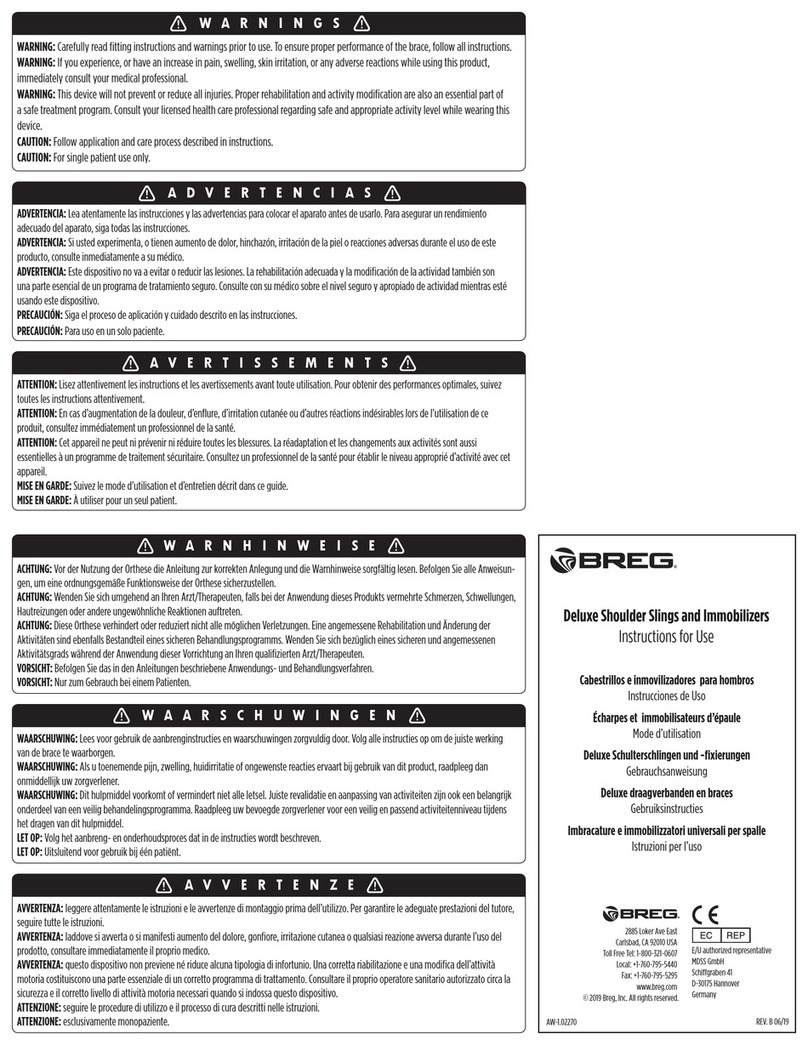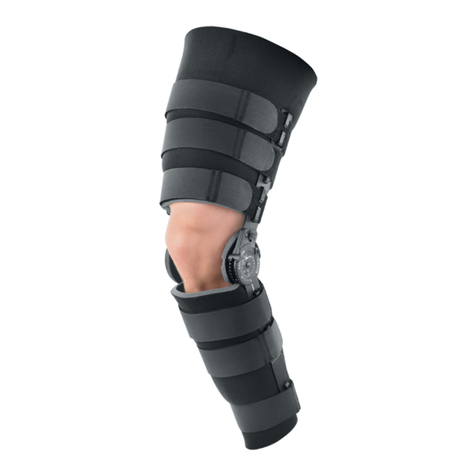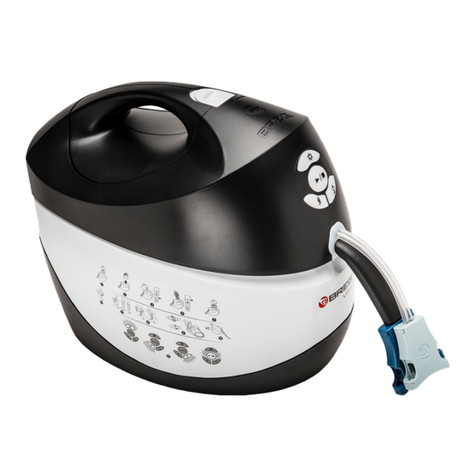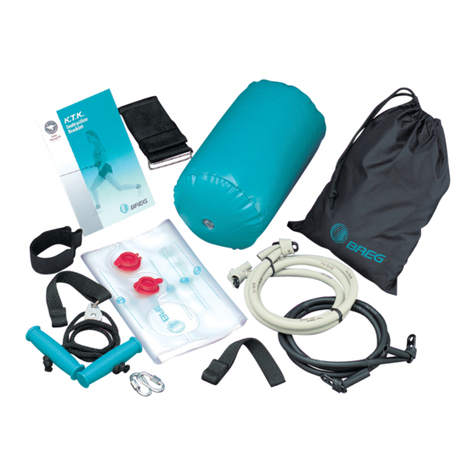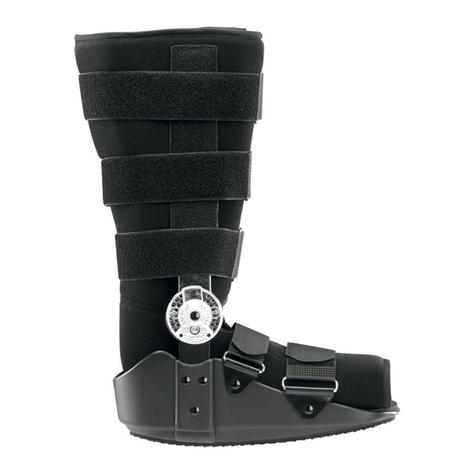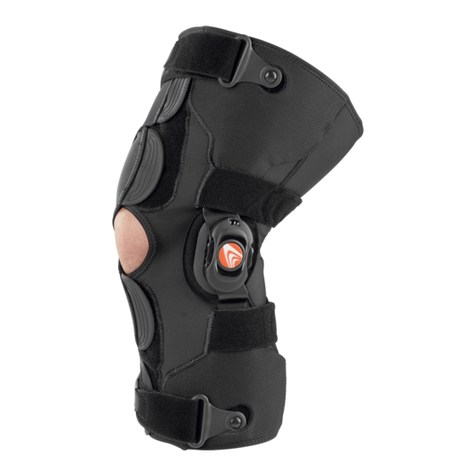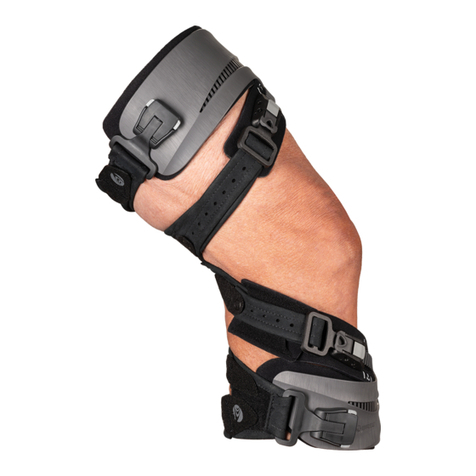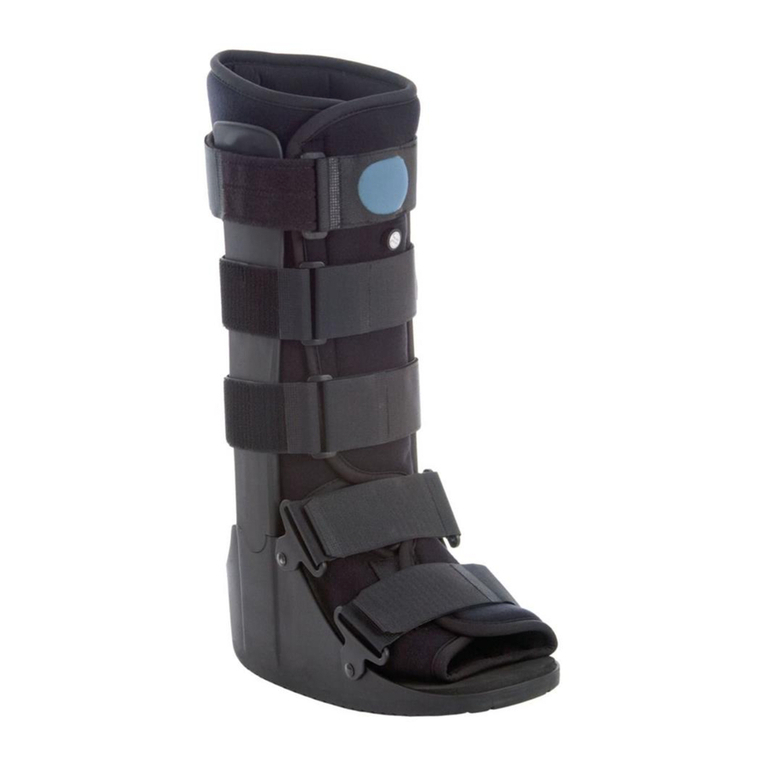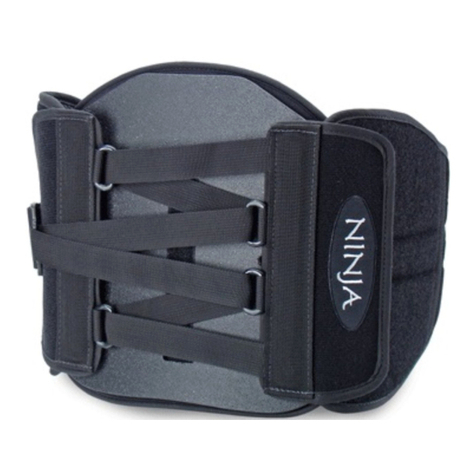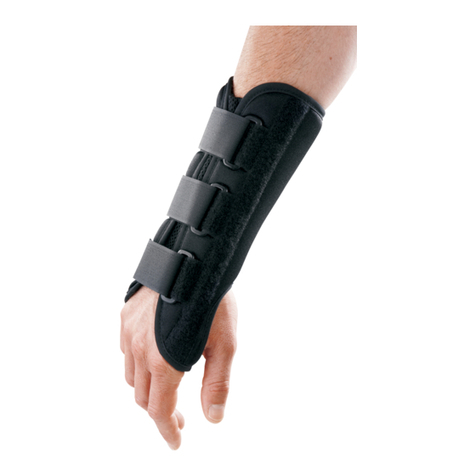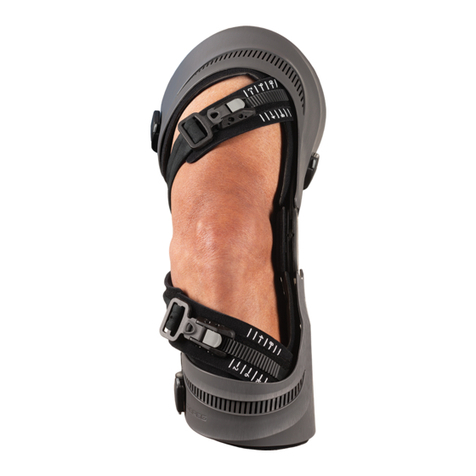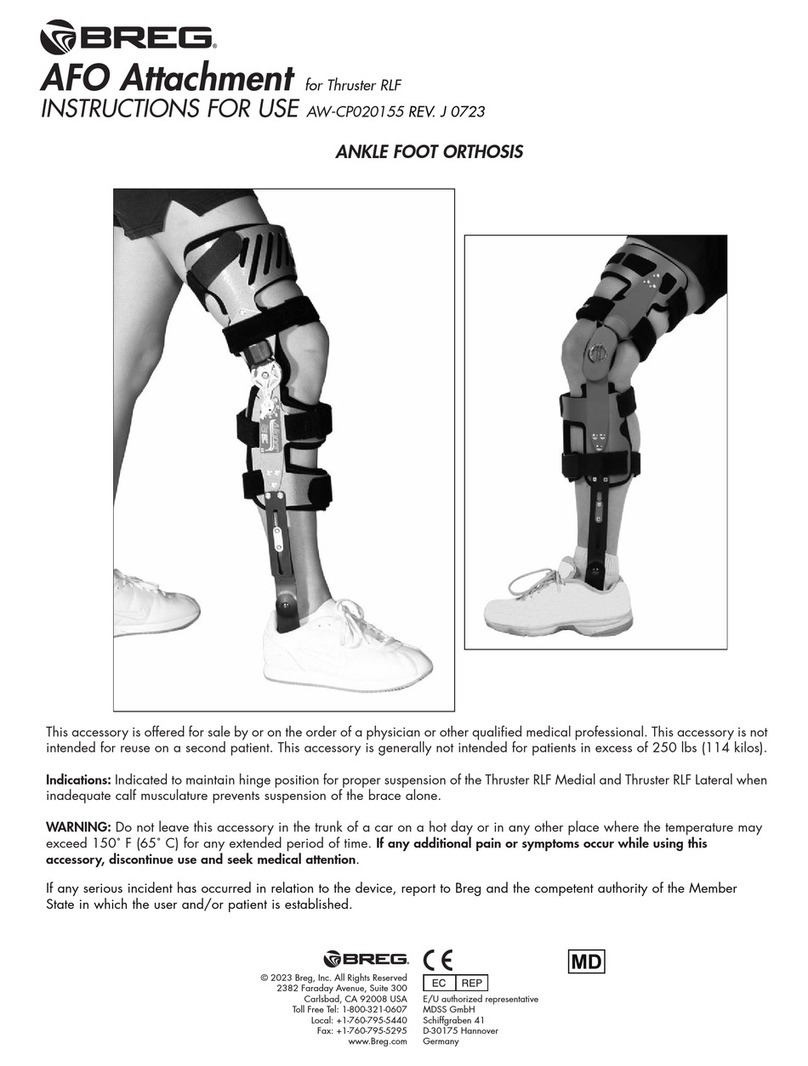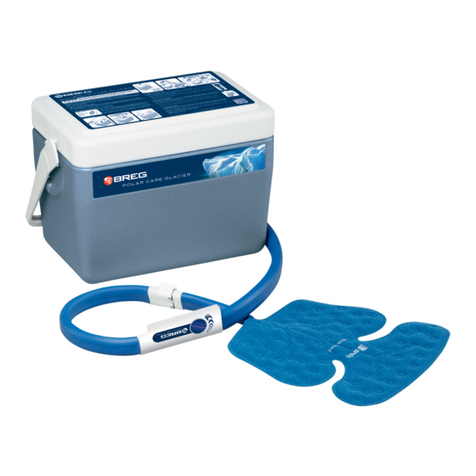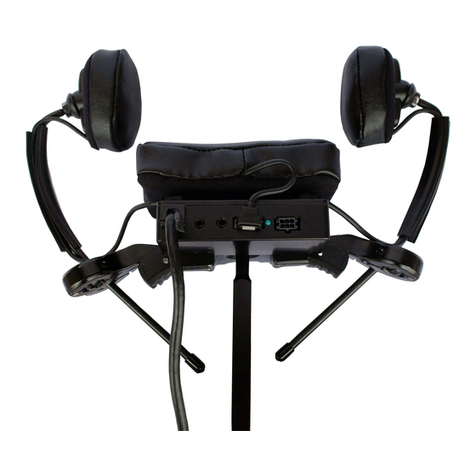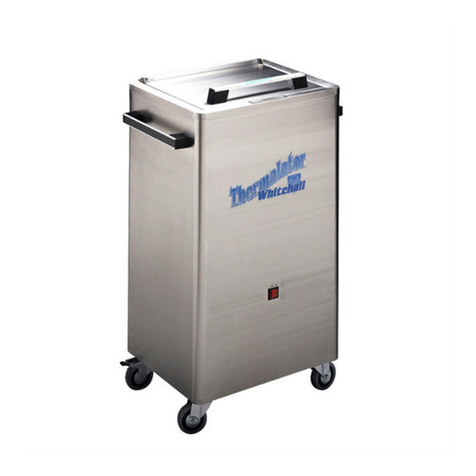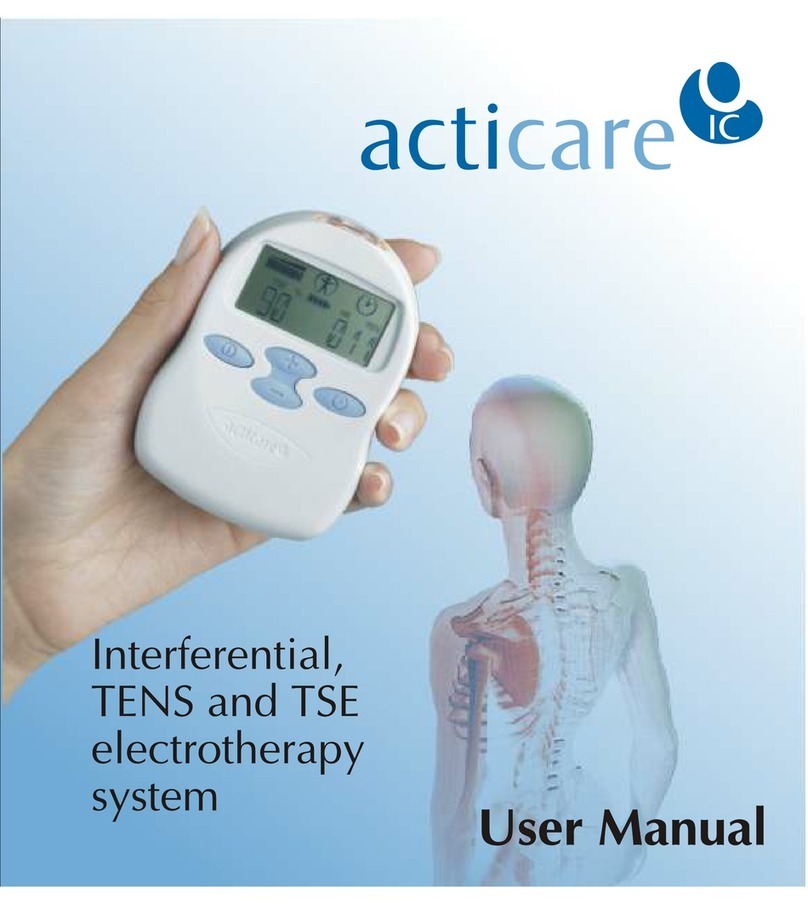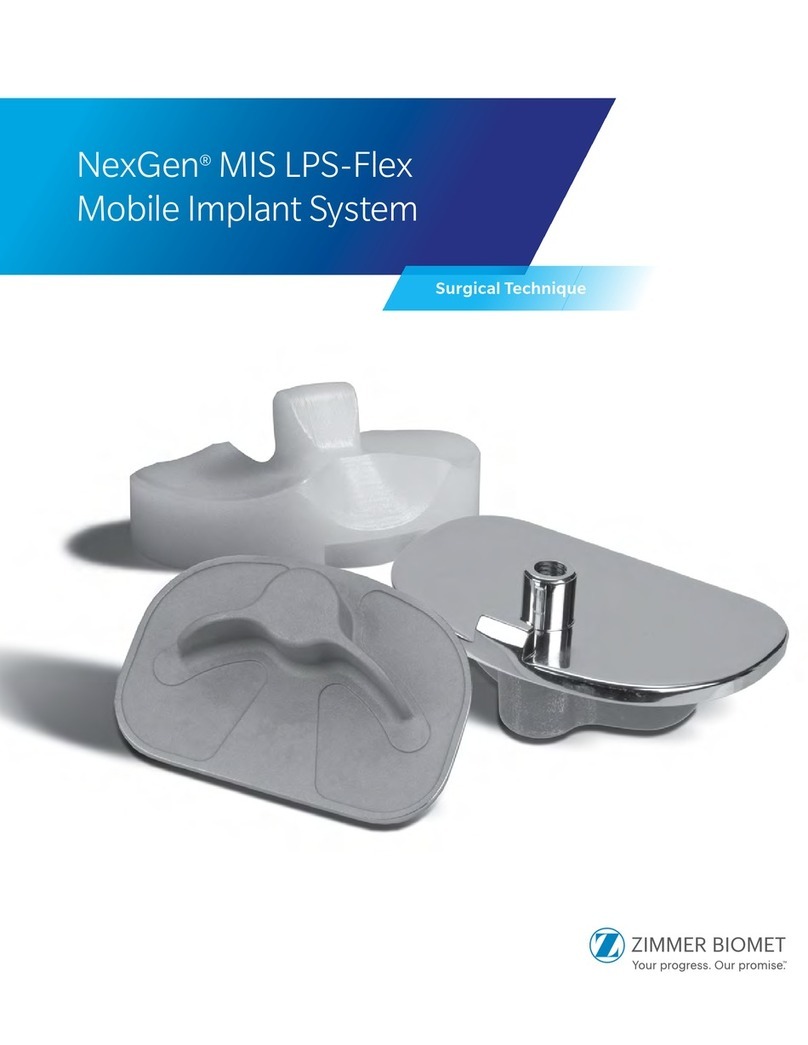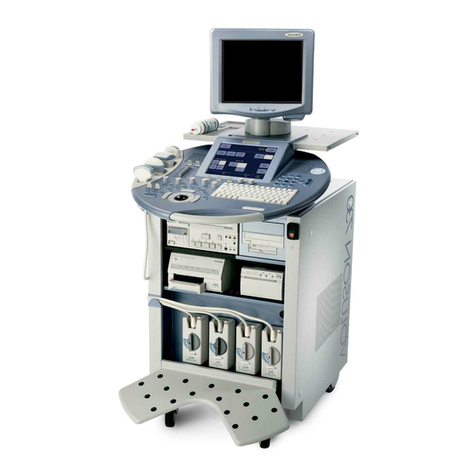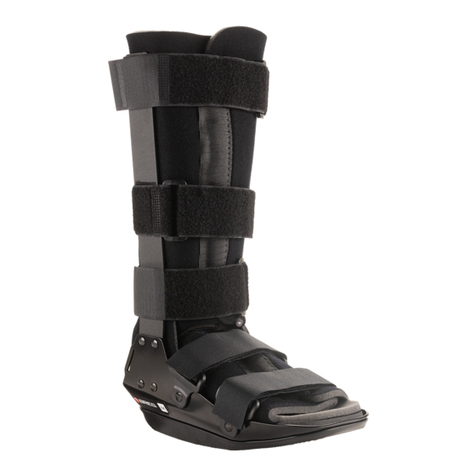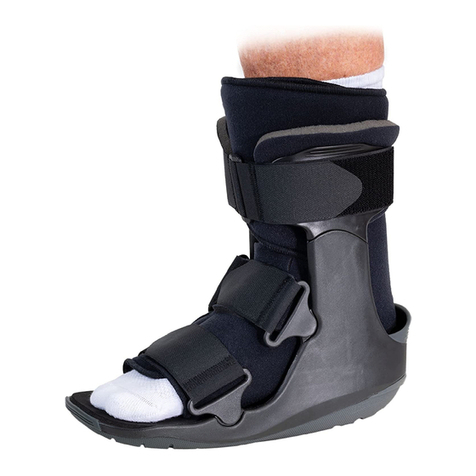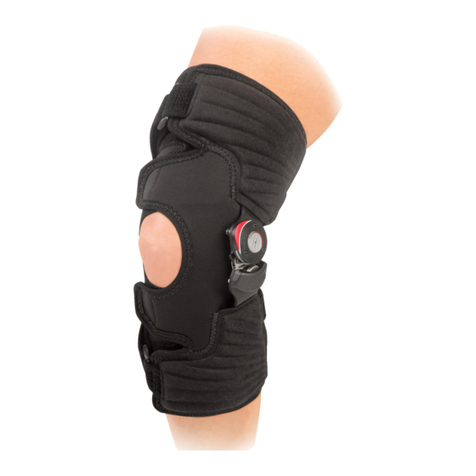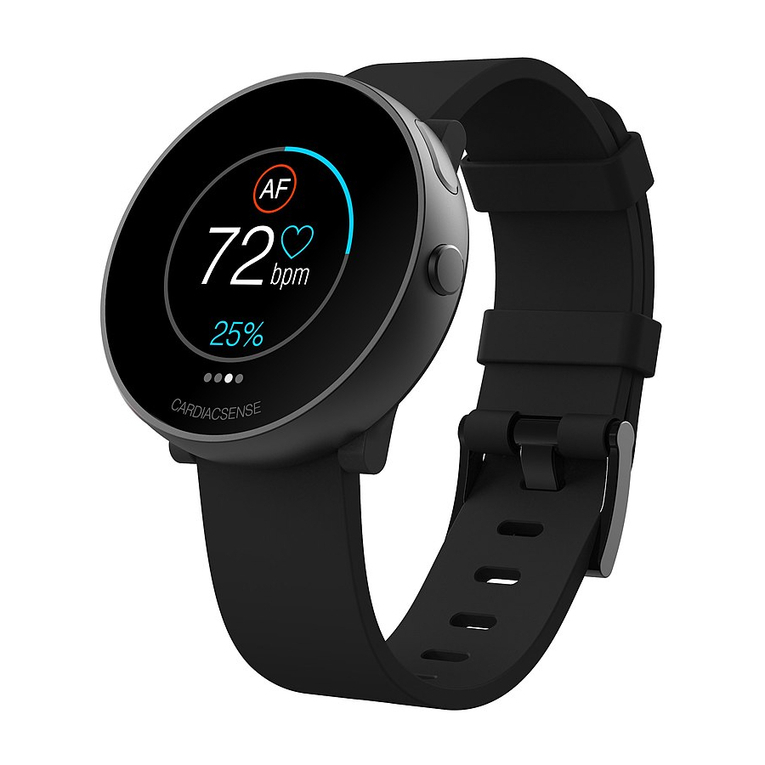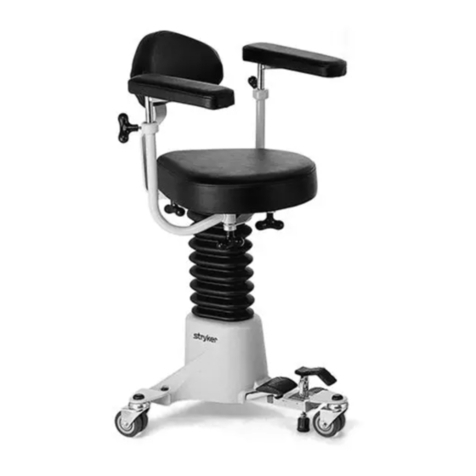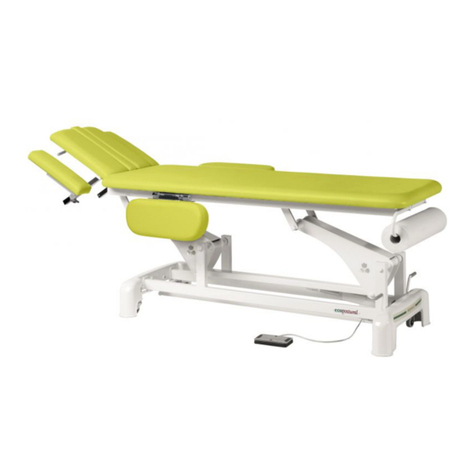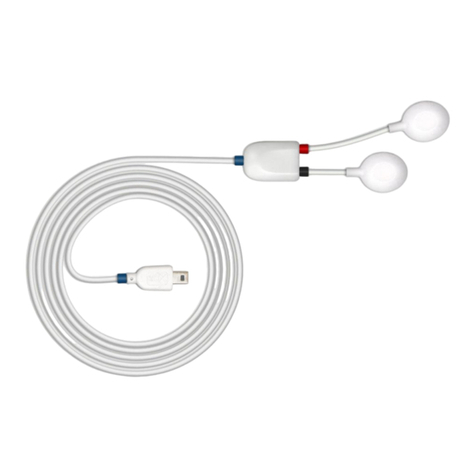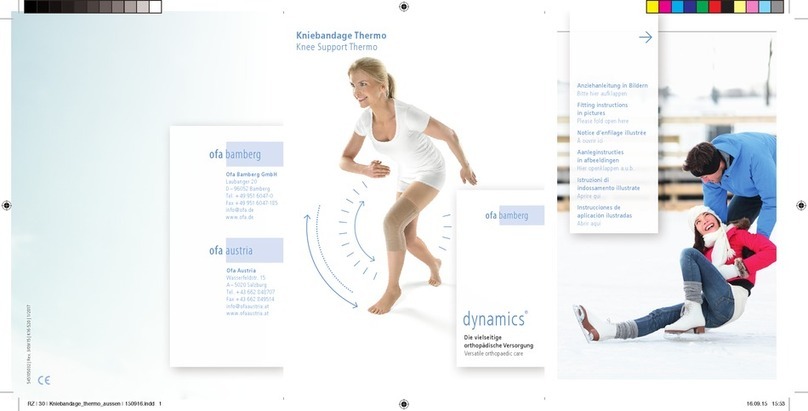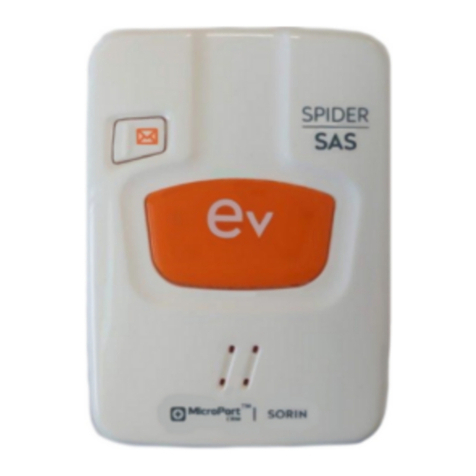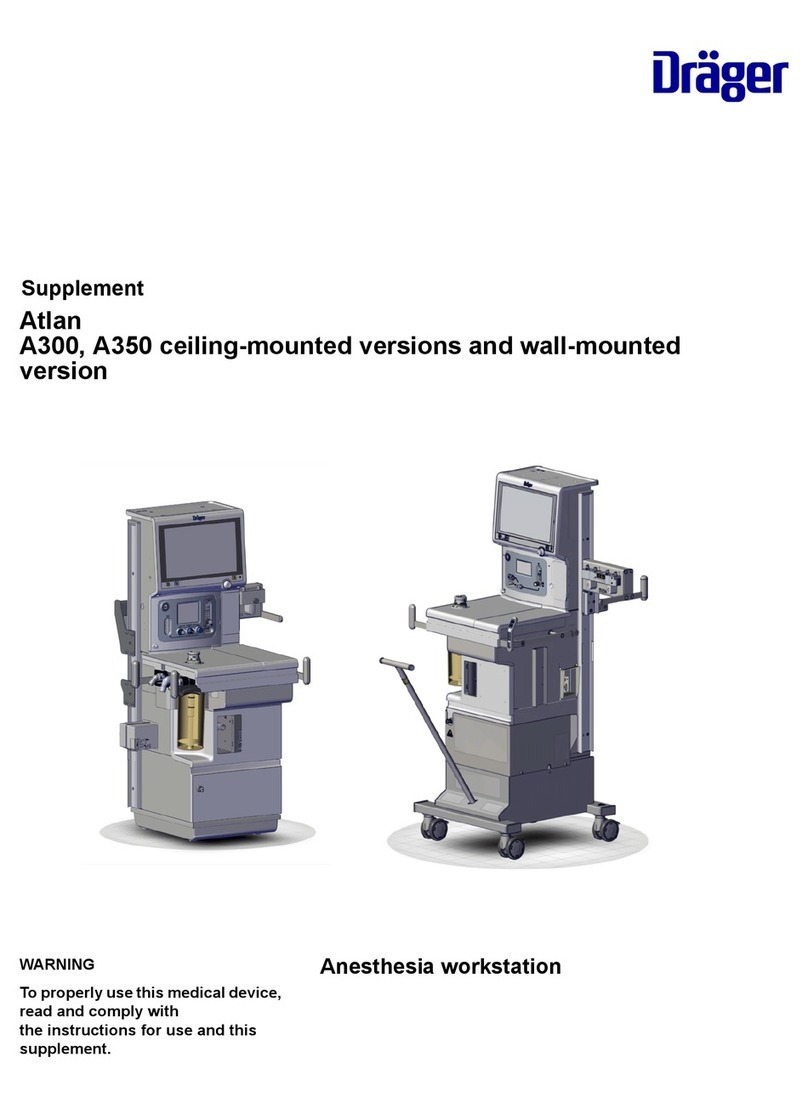
6
of 23
7
of 23
Contraindications: Compression
Therapy
Patients with the following conditions should
NOT USE Intermittent Pneumatic Compression
Therapy:
• Presumptive evidence of congestive heart
failure
• Suspected/observed pre-existing deep vein
thrombosis or pulmonary embolism
• Suspected/observed deep acute venal
thrombosis (phlebothrombosis)
• Suspected/observed inflammatory phlebitis
process
• Suspected/observed pulmonary edema
• Suspected /observed pulmonary embolism
• Suspected/observed acute inflammations of
the veins (thrombophlebitis)
• Suspected/observed decompensated cardiac
insufficiency
• Suspected/observed arterial dysregulation
• Suspected/observed erysipelas
• Suspected/observed carcinoma and carcinoma
metastasis in the affected extremity
• Suspected/observed decompensated
hypertonia
• Suspected/observed acute inflammatory skin
diseases or infection
• Suspected/observed venous or arterial
occlusive disease
• Determined venous and lymphatic return is
undesirable
• Suspected/observed Raynaud’s Disease
• Suspected/observed poor peripheral circulation
• Suspected/observed hypersensitivity to cold
• Medical situations where increased venous and
lymphatic return is undesirable
• Leg gangrene
• Recent skin graft
• Extremity containing a fracture
• Extremities that are not sensitive to pain
If pulsations or throbbing occur, the
cuff may be wrapped too tightly. Loosen
Immediately.
To prevent extremity compartment
syndrome, special attention should be given
to patients who are positioned in the supine
lithotomy position for extended lengths of time.
This includes patients with or without cuffs.
Patients should not walk with tubing
connected to cuffs.
Cuffs used in combination with warming
devices may cause skin irritation. Regularly
check for patent discomfort, compliance, and
skin irritation.
Close supervision is necessary when
this appliance is used by unconscious or
incapacitated patients and those with poor
circulation.
When using this system, regularly check the
skin where the pads are applied as prescribed.
Warnings: Cold and
Compression Therapies
Patients with any of the following cogni-
tive risk factors should only use VPULSE under
direct supervision of a medical professional
or the direct supervision of a caretaker, if pre-
scribed by a medical professional:
• Young children and elderly
• Cognitive disabilities
• Communication barriers
• Use of medications that have a negative
effect upon mental capacity
If patient has any of the cognitive risk factors,
above, medical professional or caretaker should
provide skin checks.
Patients should take caution in applying
therapy pads over open sores and abrasions. At
a minimum, these areas should be cleaned and
bandaged.
As with all prescription medical devices,
failure to follow product instructions or adjusting
setting and performing therapy applications
without the express direction and/or supervision
of your trained health care provider may lead to
improper product performance and the potential
for serious injury. For medical questions, please
consult your health care provider.
Use only according to your practitioner’s
instructions regarding the frequency and duration
of application and length of breaks between
uses, how and when to inspect the skin, and
total length of treatment. Do not use this device
if you did not receive or do not understand the
instructions.
DO NOT wrap the therapy pads as to restrict
blood or fluid flow. Regularly check the therapy
area.
DO NOT place a cast over a pad. Casting
over the pad and tubing set may restrict
necessary air circulation and proper operation.
Medical Professional Patient
Discharge Protocol
Follow this protocol prior to discharging the
patient from facility care to home use
1. Patient Screen. Screen the patient for any
contraindications and/or applicable warnings.
If the patient has anycontraindications, do not
dispense the Breg VPULSE to the patient.
If any of the warnings apply to the patient,
determine the appropriateness of application
of the VPULSE to that patient.
2. Instructions for Use. Instruct the patient on
how to properly use the Breg VPULSE. Review
the Operating Instructions in this document
and affixed to the unit with each patient.
Be aware of any nerve irritation and/or
muscular reaction that are associated with skin
sensitivity and irritation. If observed, discontinue
therapy until the cause is determined.
DO NOT operate without water in the system.
Doing so may damage your system and void the
product warranty.
Warnings: Compression
Therapy
If patient experiences pain, swelling,
sensation changes or any unusual reactions
while using the compression therapy, they are to
stop using the therapy and consult their medical
professional immediately.
Special attention should be given to those
patients with neuropathies or tissue viability
problems (i.e. diabetes, arterial or venous
insufficiencies).
3. Prescription. Instruct the patient regarding the
licensed healthcare practitioner’s prescribed
protocol: frequency and duration of use and
length of breaks between uses, how and
when to inspect the skin, and total length of
treatment. The duration of acyclic application
may vary depending upon the patient. If
the patient does not experience pain relief,
the physician may increase the duration of
cold therapy application. As the application
duration is increased, the frequency of the skin
inspections should increase.
4. Potential for Injury. Inform the patient
that improper use can result in serious skin
injury, including full thickness skin necrosis.
Emphasize the importance of following the
prescribed protocol, proper pad application,
and skin inspection.
5. Proper Pad Application. Instruct the patient
to use only the Breg VPULSE Cold Therapy
Pads designed for the body part being
treated; other pads may be colder, increasing
the risk of serious cold-induced injury,
including full thickness skin necrosis. Do not
cover the VPULSE Cold Therapy Pad with
dressing, wrapping, bracing or casting that
prevents the patient from checking the skin
under the pad.
6. Skin Inspection. Instruct the patient to inspect
the skin receiving cold treatment per the
practitioner’s instructions, typically every 1
to 2 hours. If dressing, wrapping, bracing, or
casting over the VPULSE Cold Therapy Pad
prevents the ability of the patient to perform
skin checks under the pad regularly, do not
dispense Breg VPULSE Cold Therapy to the
patient.
7. Discontinue. Instruct the patient to stop
using Breg VPULSE and contact his/her
licensed health care practitioner immediately
if they experience any adverse reactions,
such as: increased pain, burning, increased
swelling, itching, blisters, increased redness,
discoloration, welts, or other changes in skin
appearance.
8. Documentation. Provide the patient a
prescription for the duration of the total
treatment period, the frequency and duration
of individual treatment sessions, and the
frequency of skin inspections













